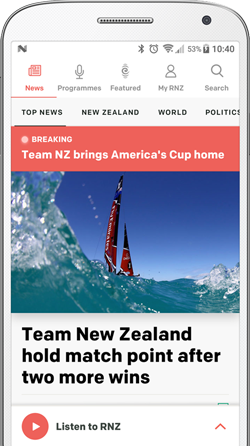
Some 45 million mussels now inhabit the harbour's 11 hectares. Photo: Suppled/Kura Paul-Burke
After years of decline, the tide is turning for Ōhiwa Harbour's mussel population, thanks to a mātauranga Māori-led restoration.
The project from Te Rūnanga o Ngāti Awa was supported by University of Waikato marine scientist Professor Kura Paul-Burke and her team, the Bay of Plenty Regional Council and the seven partners of the Ōhiwa Harbour Implementation Forum.
In 2019, only 80,000 kuku (green-lipped mussels) existed across the entire harbour, struggling against an overwhelming population of pātangaroa (11-armed seastars) that was consuming them at an unsustainable rate.
Fast-forward to December 2024, there were now 45 million mussels across 11 hectares of the harbour floor.
From a mātauranga Māori perspective, Professor Paul-Burke (Ngāti Awa, Ngāti Whakahemo) said the first thing to do for any restoration project was go to the home people.
"Nobody knows their harbour, their estuary, their ocean better than the home people, the people that have lived there consecutive generations for many years, so for Ōhiwa, we went to Ngāti Awa and the question we asked was, 'What is it that you want to know?'"
As well as managing the seastar population, the team created biodegradable taura kuku - or mussel spat lines - out of dead cabbage tree leaves to both reduce plastic pollution and seed the mussel beds.
Part of the project involved speaking with local kaumātua to identify where they had collected mussels in their youth, that allowed the team to traverse 2-3 generations of local knowledge.
From a mātauranga Māori perspective, that was fundamental, looking to the past to understand the present to inform the future, she said.
"Mātauranga Māori uses intergenerational knowledge from the past as a baseline, so it takes us further back to give us a much more broader picture of the harbour and the species within it."

University of Waikato marine scientist Professor Kura Paul-Burke. Photo: Tauihu Media / Riki Reinfeld
Pail-Burke said mātauranga was innovative and could be implemented alongside marine science.
"Our world is declining... we all know it, we can see it, we can feel it. Wouldn't it make sense to use both of our hands to help solve contemporary environmental problems, rather than having one hand tied behind our back.
"Mātauranga Māori, alongside mainstream science, policy, planning and restoration - it's better when we work together."
The project has been a step-by-step journey, carefully managed through the removal of seastars, hands-on restorative efforts and ongoing monitoring.
2019 - 80,000 mussels across the harbour
2020 - 470,000 mussels, after the first seastar removal trials
2021 - 800,000 mussels, after further restoration efforts
2023 - 16 million mussels identified on the seafloor
2024 - 45 million mussels covering an 11-hectare area
Paul-Burke said, while the mussel beds had reached an exciting milestone and were becoming more resilient, there was still work to be done.

Ohiwa Harbour mussel beds. Photo: Supplied/Leigh Tait
"We still have to do seastar management, because the seastars are still ever present and they're in higher numbers than you'd want for a balanced population."
Equally important as securing the future of the mussels was retaining the current rahui, she said. The Ministry for Primary Industries had placed a temporary two-year harvesting closure over the mussel beds, giving them time to stabilise and expand further.
"The communities around Ōhiwa harbour are amazing," Paul-Burke said. "We've been so fortunate with the very strong support from the communities to step back from harvesting to allow the mussels to grow, because it benefits, not only the harbour, but also the people."
The work in Ōhiwa Harbour was also influencing other iwi-led restoration efforts, with Professor Paul-Burke supporting similar projects across the country, including the University of Waikato Pou Rāhui project, working with local iwi at Waiheke Island, Thames Coast, Coromandel, Great Barrier Island and Maraetai-Clevedon.






